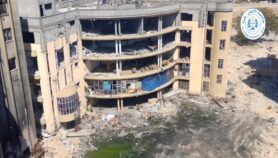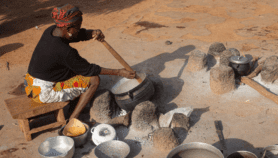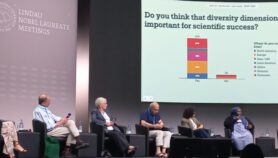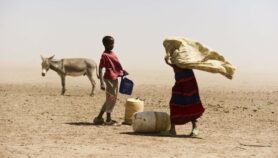By: Aziz Bensalah
Send to a friend
The details you provide on this page will not be used to send unsolicited email, and will not be sold to a 3rd party. See privacy policy.
Moroccans are receptive to science, but the country needs a much stronger communication and scientific literacy effort, says Aziz Bensalah.
Engaging the public with science probably means something different in Morocco than it does in more developed countries.
Initiatives aiming to interest people in science are often aligned with notions of ‘scientific culture’, ‘science for all’, or even ‘science for citizenship’. To design them appropriately in Morocco, characteristic features of Moroccan society must be taken into account.
As in many developing countries, the Moroccan population is not a uniform audience. There are several groups whose different needs depend on their level of literacy, age, wealth, or whether they live in urban or rural parts of the country. The languages used in daily life vary within the population, as do the languages used in the education system.
Moroccan people have a high appreciation for dramatic advances in technology. This creates a positive image of science.
But high unemployment among science graduates — one of the difficulties facing the scientific community in Morocco — cancels out this benefit.
Science cannot compete with other activities and entertainment, especially for young people’s attention. So to engage the public with science in Morocco, we need a long-term strategy that is carefully designed and strongly supported by decisive stakeholders, including national authorities, the media, municipalities, and private companies.
The Moroccan government, the media and other stakeholders have little or no involvement with activities designed to engage the public with science.
And the state has yet to acknowledge, in any form whatsoever, the link between the level of scientific culture in the Moroccan population and socioeconomic development. As far as I am aware, not a single report or study into the issue has been produced by the Moroccan parliament.
Although professional journalists write about scientific events in Morocco, they are not formally trained as science journalists. Popular science is missing from the media, and a few interviews with Moroccan scientists will not change things much.
So what does the landscape look like for organisations involved in the diffusion of scientific culture in Morocco?
Public institutions in charge of scientific policy and training do engage with science communication, but they are too few to make a significant impact. The Hassan II Academy for Science and Technology organises an annual Youth and Science event throughout the country. And every year the Department of Higher Education organises National Science Week events in universities.
But despite this, there is a diverse group of voluntary organisations aiming to promote science dissemination. Indeed, this movement took the lion’s share of funding in the latest round of project proposals under a programme set up in 2004 by the French Ministry of Foreign and European Affairs to promote scientific and technical culture in ten countries of the South.
At Morocco’s National Center for Scientific and Technical Research, we have taken on the role of forging links between associations housed in universities.
In 2008 we invited isolated but recognized academics, mainly those who had taken part in the French-sponsored projects, to form a national network of university clubs (known as RNCST) to promote and diffuse scientific and technical culture.
RNCST has several well-defined objectives, including to increase the number of university clubs so they represent the entire country and several scientific disciplines, and to offer financial and technical support to projects designed to improve the scientific and technical knowledge of Moroccos citizens.
It also aims to strengthen the skills of stakeholders, facilitate exchanges between them, and create partnerships on a regional or national scale.
And it hopes to raise awareness among decision-makers of the need for a national policy designed to raise the level of scientific and technical culture in the population, so the country can meet the challenges of economic and social development.
In our activities ‘on the ground’, we use various communication strategies, often working through a translator in rural parts of the country to tailor our science communication to local problems.
For example, we have used a filtering experiment to show that water which appears safe to drink is, in fact, unsafe.In some non-coastal areas we demonstrated the difference in iodine content between free local salt and salt sold in grocery stores — a difference that explains the prevalence of goiter in those parts of the country.
Based on our experience, particularly in rural areas or with underprivileged people in urban areas, ‘scientific literacy’ appears to be the most relevant way to engage the public in Morocco.
In fact, I would go as far as to say that Morocco is facing an ongoing crisis with the role of science in society. In addition to putting in place a long-term strategy towards a scientific culture, the country needs to adopt an emergency ‘scientific literacy’ plan for people with little or no education.
Aziz Bensalah is head of the public engagement department of the National Center for Scientific and Technical Research (CNRST) in Rabat, Morocco. He also coordinates the National Network for the promotion and diffusion of Scientific and Technical Culture.













